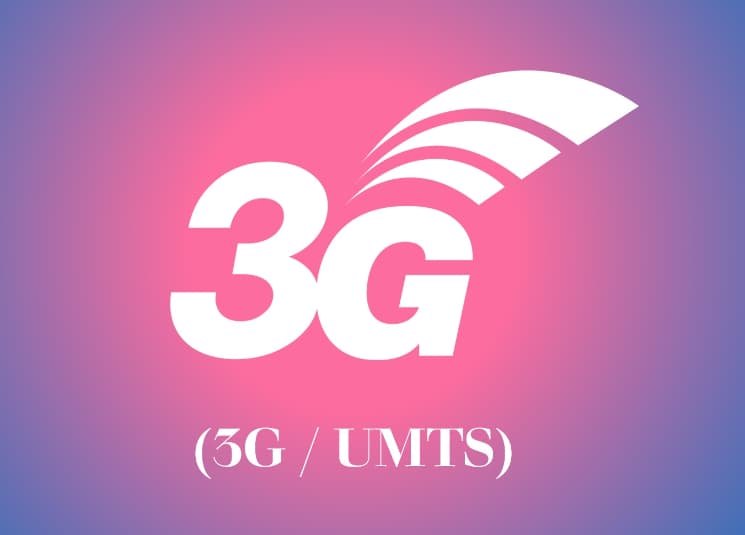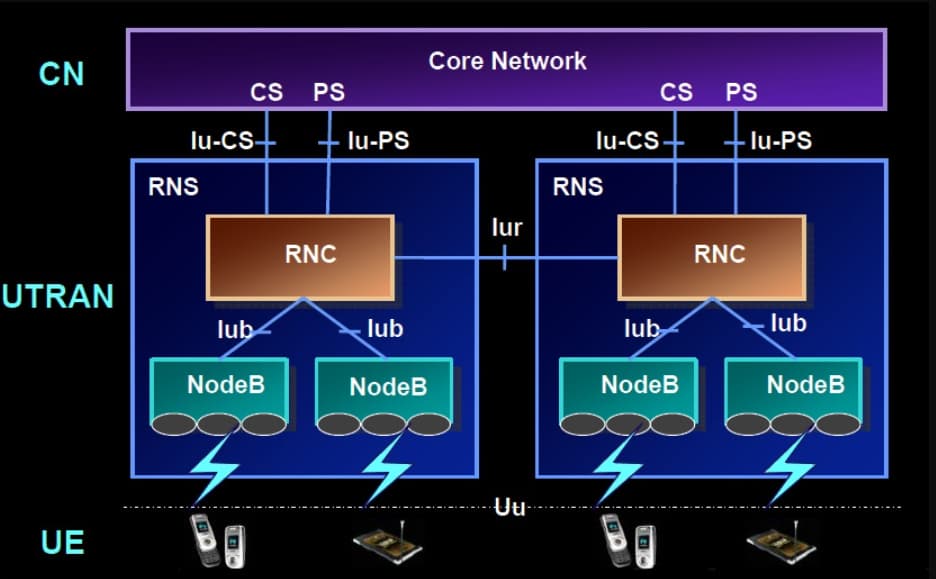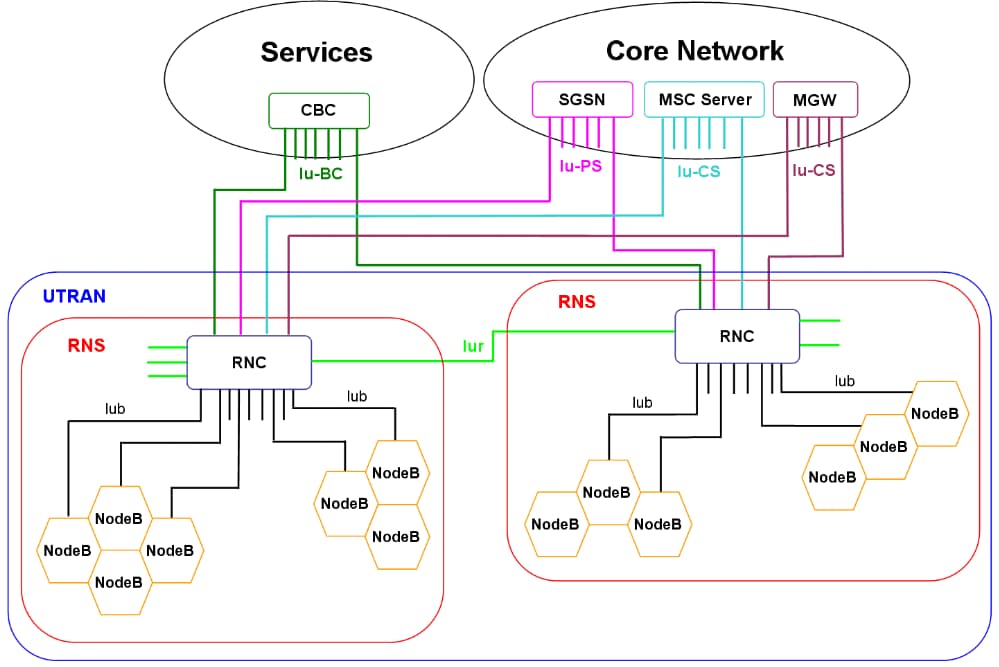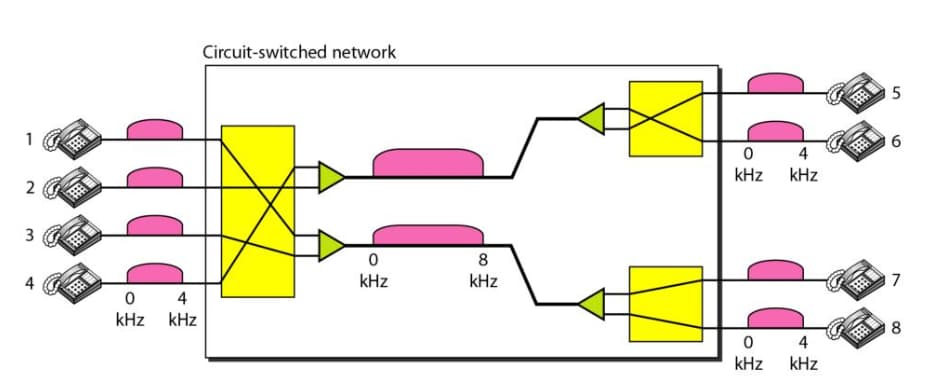Unveiling the Complexities of 3G UMTS Network Architecture
In the rapidly evolving landscape of mobile telecommunications, the Universal Mobile Telecommunications System (UMTS) stands as a key advancement, heralding the arrival of third-generation (3G) network technology. Developed by the 3rd Generation Partnership Project (3GPP), UMTS is not merely an incremental upgrade but a revolutionary enhancement that reshapes how mobile communications are perceived and utilized. This technology significantly improves upon its predecessors by utilizing the radio spectrum more efficiently, which facilitates faster data transfer rates and increases network capacity to meet the burgeoning demand for mobile internet and multimedia services. The integration of voice, data, and multimedia into a seamless communication experience underscores a transformative shift in mobile technology. This article digs into the intricate architecture of UMTS, exploring its core components, including the User Equipment (UE), Radio Network Subsystem (RNS), and Core Network, which collectively drive its superior performance.Catalog

Figure 1: 3G Universal Mobile Telecommunications System (UMTS)
What Exactly is UMTS?
The Universal Mobile Telecommunications System (UMTS) marks a significant advancement in mobile network technology, establishing itself as the third-generation (3G) standard developed by the 3rd Generation Partnership Project (3GPP). Unlike earlier technologies, UMTS makes more efficient use of the radio spectrum, allowing for faster data transfer and greater capacity. This system isn't just a minor upgrade; it primarily transforms mobile communication by significantly enhancing data transfer rates and processing capabilities.
UMTS is dynamic in shifting from traditional voice services to a more integrated approach that includes voice, data, and multimedia content. This shift addresses the growing demand for high-speed mobile internet and multimedia applications. The system's architecture is carefully structured to support smooth, high-speed communication, making it well-suited to the increasing need for reliable connectivity in both personal and professional settings.

Figure 2: 3G UMTS Network Constituents
Key Elements of a 3G UMTS Network
The 3G UMTS system builds on earlier cellular technologies, evolving to meet the complex demands of modern telecommunications. The system is organized into three key components, each playing a hard role in its operation:
• User Equipment (UE)
This category includes more than just mobile phones; it covers a broad range of devices designed for high-speed data and multimedia usage, in addition to traditional voice communication. The UE category has expanded to include devices like data terminals that may not support voice calls but are optimized for data transmission. These devices are versatile, supporting various services and applications, which reflects the system's adaptability to different user needs.
• Radio Network Subsystem (RNS)
Also called the UMTS Radio Access Network (UTRAN), this component updates and replaces the GSM’s Base Station Subsystem (BSS). It manages the air interface—the serious link for data exchange between the UE and the core network—ensuring that communication channels are robust, efficient, and secure.
• Core Network
This serves as the dominant backbone of the UMTS system, similar to the Network Switching Subsystem (NSS) in the GSM architecture. It connects to both internal and external networks, such as the public switched telephone network (PSTN) and other mobile networks. The core network is designed to ensure seamless integration across these various networks, enabling efficient data management, high connectivity, and reliable overall performance.
Exploring UE in 3G UMTS
User Equipment (UE) is the demanding link between the user and the UMTS network, representing a significant evolution from traditional mobile phones. These devices have transformed into multifunctional tools that handle complex tasks, from computing and multimedia to high-speed internet access. Each component within the UE is optimized for superior performance and efficiency:
RF Circuitry: The radio frequency circuitry is required for sending and receiving signals. Advances in RF technology have made it possible to reduce power consumption while enhancing signal quality, ensuring consistent connectivity in various environments.
Baseband Processing: This component processes the baseband signals, which are the raw data streams before modulation. Modern UEs are equipped with advanced baseband processors that manage these tasks more efficiently, balancing power use and processing speed to support high-speed data transmission smoothly.
Battery Technology: As UEs have become more capable, their power needs have increased. The introduction of Lithium-Ion batteries has been key to meeting these demands, offering longer battery life and higher energy density. This allows users to enjoy extended use of multimedia and other functions without needing frequent recharges.
Universal Subscriber Identity Module (USIM): Evolving from the traditional SIM card, the USIM enhances security and expands storage capacity. It supports advanced encryption and authentication processes, influential for protecting user data and ensuring secure communication across the network.

Figure 3: 3G UMTS Radio Network Subsystem
Functionality of the 3G UMTS Radio Network Subsystem
The Radio Network Subsystem (RNS) is a key component of the UMTS network, forming part of the UMTS Radio Access Network (UTRAN). It manages radio frequencies and ensures efficient signal transmission and reception between user equipment (UE) and the core network. The architecture of UTRAN is specifically tailored to support Wideband CDMA (WCDMA), the core technology that powers the 3G UMTS air interface. This technology allows for higher data transmission rates and improved overall network efficiency compared to earlier systems.
The RNS performs several grave functions, including advanced signal processing and precise frequency management. It ensures stable connectivity across the network's wide geographic coverage, optimizing the quality of service and enabling seamless communication for users. The subsystem is designed to make the best use of the available spectrum, dynamically adjusting to changes in user demand and environmental conditions, which helps maintain optimal performance and reliability across the network.
Components of the 3G UMTS Core Network
The Core Network of the UMTS architecture is an advanced evolution of the GSM network’s core, specifically upgraded to support the broader capabilities of UMTS. It is composed of two main segments:

Figure 4: Circuit-Switched Elements
These components are responsible for managing traditional voice calls and similar services. They operate through dedicated channels to ensure reliable and continuous voice communication, meeting the high standards required for traditional telephony.

Figure 5: Packet-Switched Elements
Designed for data handling, these elements manage information in packets, which is ideal for the irregular nature of internet traffic, such as web browsing and email. This packet-based approach makes more efficient use of network resources, reducing delays and increasing the speed of data transfer, especially for data-heavy applications.
How UMTS is Transforming Industries?
UMTS has greatly expanded the range of mobile technology applications, making it more versatile and impactful in various fields:

Figure 6: Mobile Internet
UMTS provides fast and reliable internet access, enhancing web browsing and enabling more efficient mobile office functions. Users can easily manage work-related tasks and stay connected while on the move.

Figure 7: Video Streaming
With UMTS, users can stream high-quality video content without interruptions, driving the growth of mobile entertainment and media platforms. This smooth streaming experience supports the increasing demand for on-the-go video consumption.

Figure 8: Telemedicine
The high data rates offered by UMTS facilitate real-time transmission of medical images and enable teleconsultations, improving the accessibility of healthcare services. Patients and doctors can interact remotely, making healthcare more convenient.

Figure 9: Location-Based Services
UMTS improves the accuracy and speed of data transmission for location-based applications, enhancing navigation and supporting a wide range of commercial services. This precision benefits users in finding services, navigating routes, and receiving location-specific information.

Figure 10: Mobile Gaming
The low latency of UMTS creates an optimal environment for interactive and multiplayer gaming on mobile devices. Gamers can enjoy smooth, responsive gameplay without the delays that can affect performance.

Figure 11: IoT Applications
UMTS efficiently connects and manages Internet of Things (IoT) devices, making it a reliable choice for integrating smart devices in both homes and industries. Its robust network capabilities support the growing demand for connected devices.

Figure 12: Emergency Services
The dependable bandwidth and reliability of UMTS make it ideal for grave communications during emergencies. It enhances the effectiveness of response efforts by ensuring clear and uninterrupted communication in crises.
Pros and Cons of UMTS
Pros
Higher Data Rates: UMTS delivers faster data speeds, enabling smooth video streaming, quicker downloads, and more responsive online gaming. These higher data rates support advanced multimedia services, making for a richer user experience.
Improved Network Efficiency: UMTS incorporates innovations in network management and data transmission, optimizing resource use and reducing latency. This efficiency leads to better performance and a more stable network.
Enhanced User Experience: The superior connectivity and broader range of services offered by UMTS result in a more reliable and comprehensive experience for users. It supports a wider array of applications, ensuring consistent performance across various tasks.
Cons
Higher Costs: The implementation of UMTS infrastructure is more expensive than in previous generations due to the need for advanced technology and specialized equipment. This can lead to higher operational costs for providers and, potentially, higher prices for consumers.
Variable Coverage: While UMTS provides strong coverage in urban areas, it can be less reliable in rural regions. This variability in coverage may limit accessibility for users in less densely populated areas, where GSM may still offer better availability.
Comparing GSM and UMTS
The shift from GSM to UMTS brings significant improvements in network design and functionality.
• Network Structure
UMTS combines both circuit-switched and packet-switched networking, allowing for greater bandwidth and faster data speeds. This upgrade supports more advanced applications and a wider range of services, enhancing the overall user experience.
• Data Handling
GSM was primarily designed for voice communication with limited data capabilities. In contrast, UMTS excels at managing large volumes of high-speed data, making it ideal for multimedia and broadband services. This allows users to enjoy faster downloads, smoother streaming, and more responsive online interactions.
• Service Range
While GSM is mainly focused on voice services, UMTS expands its offerings to include a variety of data-driven services like video streaming, online gaming, and IoT applications. This makes UMTS a more comprehensive solution for modern mobile communication needs, catering to both voice and data demands.
Conclusion
UMTS represents a significant leap forward in mobile communication technology, integrating high-speed data transfer, enhanced network efficiency, and a wide array of multimedia applications into a robust and versatile mobile communication system. By providing higher data rates and incorporating both circuit-switched and packet-switched elements, UMTS offers a comprehensive solution that not only improves upon traditional voice services but also adeptly supports the dynamic needs of modern telecommunications—from video streaming to IoT applications.
Despite its higher implementation costs and variable coverage issues, the benefits of UMTS, such as improved user experience and expanded service capabilities, solidify its role as a foundational technology in the evolution towards more advanced mobile networks. As we continue to witness the expansion of digital demands, UMTS serves as a serious technological stepping stone, paving the way for future innovations in the telecommunications sector.
Frequently Asked Questions [FAQ]
1. What is the 3G UMTS architecture?
The 3G UMTS (Universal Mobile Telecommunications System) architecture consists of three main components:
User Equipment (UE): This includes the mobile device and its corresponding subscriber identity module (SIM) card.
UTRAN (UMTS Terrestrial Radio Access Network): This is the network section that handles wireless communication and includes base stations known as Node Bs and controllers known as Radio Network Controllers (RNCs).
Core Network: This part connects to various services and transfers data and voice to other network types. It consists of two main domains: the Circuit Switched domain for voice calls and the Packet Switched domain for data, handling Internet connectivity and data transfer.
2. What is the structure of the UMTS network?
The UMTS network is structured around the core network, the UTRAN, and the user equipment. The core network includes several key components such as the Mobile services Switching Center (MSC) for voice, the Serving GPRS Support Node (SGSN) for packet-switched data, and the Gateway GPRS Support Node (GGSN) which acts as an interface to external networks. UTRAN provides the connectivity between the user equipment and the core network, managing all radio-related functionalities.
3. Does 3G use UMTS?
Yes, 3G widely uses UMTS as its main technology standard. UMTS was developed to enable faster data transmission rates and increased capacity compared to the earlier 2G networks. It supports a variety of services like voice, data, and multimedia.
4. What is UMTS also known as?
UMTS is also commonly known as 3GSM, indicating its roots in the 3rd Generation and GSM (Global System for Mobile Communications) technology standards.
5. What carrier is UMTS?
UMTS is not specific to any single carrier; rather, it is a technology standard that many mobile network operators worldwide adopt. Carriers deploy UMTS networks to provide 3G services to their subscribers, ensuring support for a range of mobile services including internet access, video calls, and mobile TV.